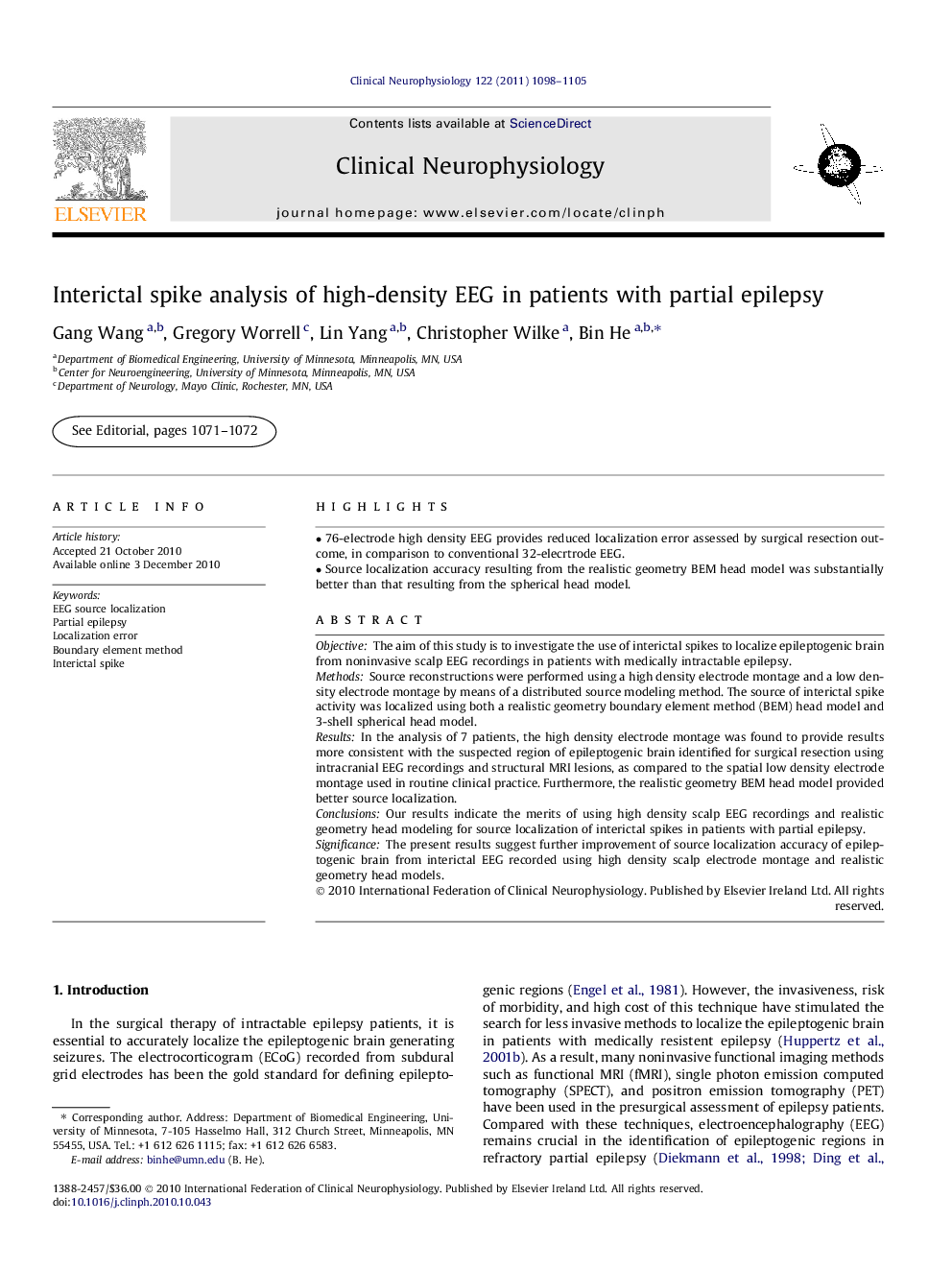| Article ID | Journal | Published Year | Pages | File Type |
|---|---|---|---|---|
| 3044291 | Clinical Neurophysiology | 2011 | 8 Pages |
ObjectiveThe aim of this study is to investigate the use of interictal spikes to localize epileptogenic brain from noninvasive scalp EEG recordings in patients with medically intractable epilepsy.MethodsSource reconstructions were performed using a high density electrode montage and a low density electrode montage by means of a distributed source modeling method. The source of interictal spike activity was localized using both a realistic geometry boundary element method (BEM) head model and 3-shell spherical head model.ResultsIn the analysis of 7 patients, the high density electrode montage was found to provide results more consistent with the suspected region of epileptogenic brain identified for surgical resection using intracranial EEG recordings and structural MRI lesions, as compared to the spatial low density electrode montage used in routine clinical practice. Furthermore, the realistic geometry BEM head model provided better source localization.ConclusionsOur results indicate the merits of using high density scalp EEG recordings and realistic geometry head modeling for source localization of interictal spikes in patients with partial epilepsy.SignificanceThe present results suggest further improvement of source localization accuracy of epileptogenic brain from interictal EEG recorded using high density scalp electrode montage and realistic geometry head models.
► 76-electrode high density EEG provides reduced localization error assessed by surgical resection outcome, in comparison to conventional 32-elecrtrode EEG. ► Source localization accuracy resulting from the realistic geometry BEM head model was substantially better than that resulting from the spherical head model.
